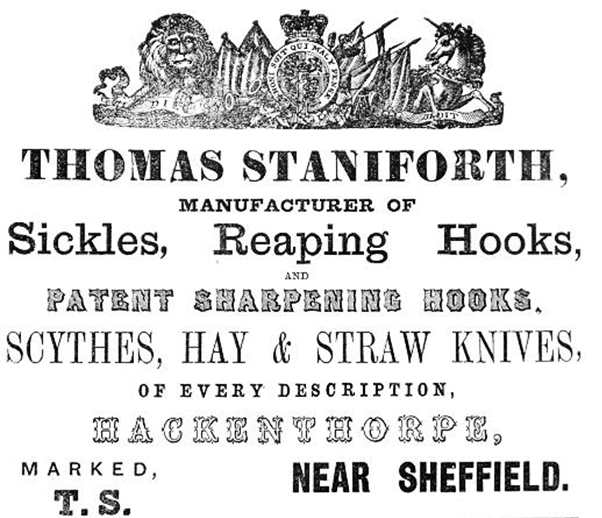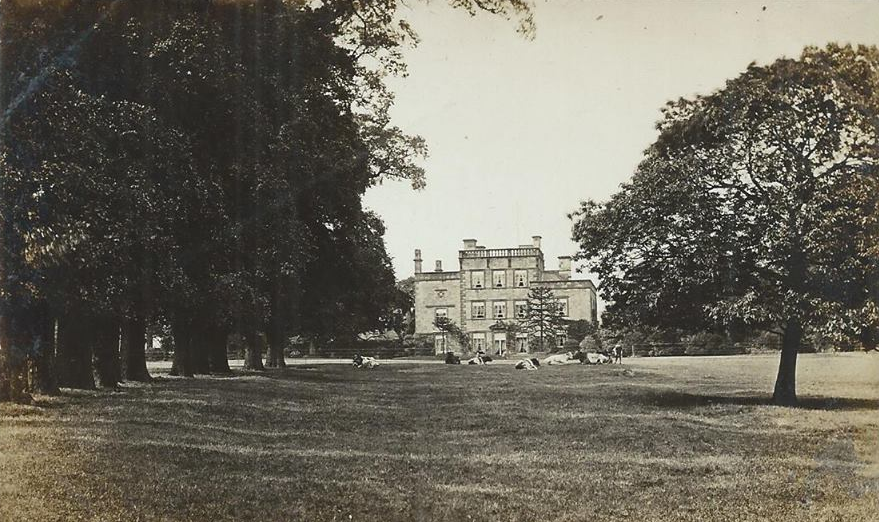
Thomas Staniforth & Co. Sickle works at Hackenthorpe.
 Mosborough Hall, Samuel's Residence
Mosborough Hall, Samuel's Residence Samuel Staniforth was baptised at Eckington St. Peter & St. Paul's Church on October 17th, 1751 to William Staniforth and Mary Creswick.
When his father passed away in 1766, Samuel inherited Mosborough Hall amongst other properties at Brincliffe Edge.
The Cutlers Apprentice records show that Samuel, son of William Staniforth of Mosborough earned his freedom in 1772, however Samuel was known more for his Mines on the Mosborough Moor rather than Sicklesmithing.
In George Foster's 1886 book Reminiscences of Mosborough, he makes several references to Samuel.
Firstly when recording the principal houses from that time period, he notes Mosbro Hall, the residence of Samuel Staniforth, Esq. He also goes onto describe the hall in detail:
Mosbro’ Hall, an ancient looking mansion with terrace roofs, did not show itself to so much advantage as it does at the present the, for then the turnpike ran close by the west front, from which it was separated by a high wall. Sometime previous to the making of the turnpike, it is most probable there was a much larger park attached to it, which extended to what was then the highway in West Mosbro’ and that the entrance was near the Summer house, which would then be the lodge, for the hall and Summer house are built in exactly the same peculiar style. Samuel Staniforth, the owner, was the proprietor of a coal pit worked by a gin, near the top of Mosbro’ Common, just below the cottages belonging to Henry Staniforth, Esq. Here he built a soft coke oven, and burnt coke for sicklesmiths and Sheffield manufacturers. No large coke was then burnt in the township. He sank, what is now called the old engine pit, on the Little Hill, hut could not work it owing to the large quantity of water. He also busied himself in parish affairs. He died in 1812, and was buried in Eckington Churchyard in front of the chancel. He left the hall to Mrs. Poynton his sister, who let it to John Smith, Esq.
He then makes a final mention: After the death of Samuel Staniforth, Esq., there were no coal pits in Mosbro’ for several years. Coal was fetched either form Birley Moor on the top end of Eckington; a good deal being carried in panniers across donkeys backs. Donkeys were also used to carry sickles, which were placed in pack saddles, to the grinding wheels. This method of carrying sickles continued in vogue till about the year 1860.
Samuel never married, or had children, he passed away in 1812 and was buried on February 27th of that year.
.